Last week I stood on a hill where one of my ancestors stood 230 years ago. Christmas is supposed to be a time for ghosts. Between the old year and the new year, we have a few days out of time. Maybe that’s why so many Christmas stories commune with spirits. And this week, I’ve been walking with some of mine.
They come from my mother’s side of the family. Earlier this year, she was looking through some of her mother’s papers and found a genealogy. And she told me it led here. Her grandfather was Edwin Jenks Stephenson. His mother was Laura Jenks. (She was a tiny Welsh woman, the family story goes, and I may take after her.)
They lived in Iowa, but my mother told me that three or four generations before, their family had lived in Adams. I had never known that I might have had relatives, however distant, in the Berkshires.
So one fall afternoon when I had been researching a story in the local history room at the Berkshire Athenaeum, I asked the librarians if they knew the Jenks family.
The librarian handed me a book five inches thick.
It turns out that the Jenkses not only lived in Adams, but in the 1790s they owned a good deal of land here. They ran a sawmill, and they made an impression on the town.
And in the middle of World War II, one of their descendants decided to look them up. Harlan Walker Jenks (I suppose he and I are distant cousins) had worked as a civil servant from California to Washington D.C., and he left funds for an extended family tree. Thanks to a researcher named William B. Browne, I can look through generations.
Searching some Adams local history, I can find a Jenks presence here even now. Jesse Jenks moved to Adams in his later years, in 1790, to a farm next to his brother, Edmund, on Orchard Street. The Adams Historical Society tells me Edmund Jenks’ house still stands. He built it in 1772, and his family “owned a great amount of land between Stafford Hill and the center of town.”
I tried to find the house. Google Maps took me uphill from the center of town, up a winding road, and … here.
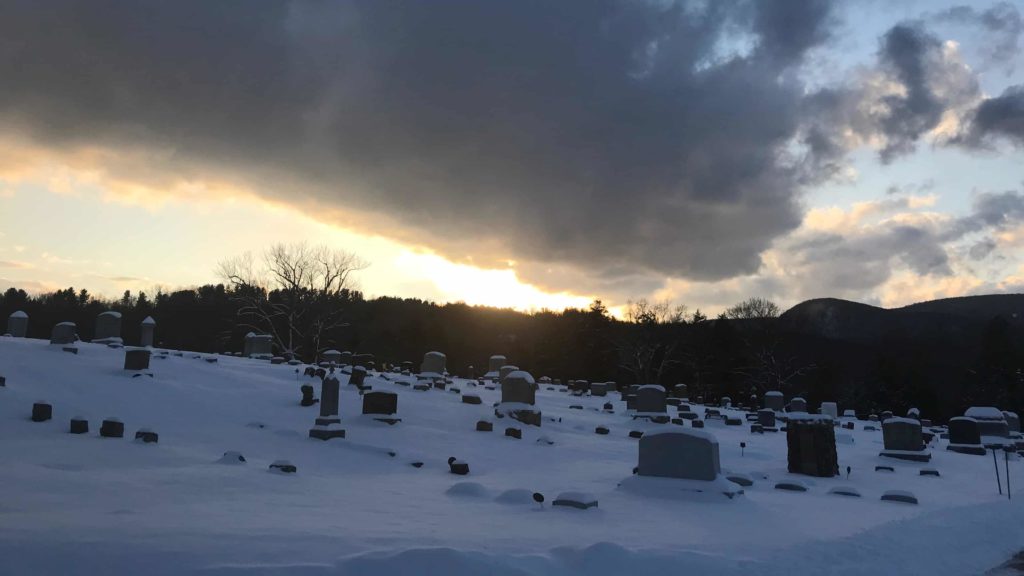
Bellevue Cemetery spreads over a high ridge in Adams.
Out into the middle of Bellevue Cemetery at sunset. As I looked toward the light on the ridge, a belt trees on my left stretched south toward the Cheshire town line. I don’t know where the boundary lines would have lain in 1790, but Jesse Jenks would have lived very near here on a cold, clear winter evening.
First generation — Joseph Jenks crosses the Atlantic
The steps he took to get here, and that his family took to meet mine in Iowa, make a complex story. Browne’s book is a tour through four hundred years of history, and for me it is sometimes compelling, sometimes sobering, and sometimes both.
It begins in Wales, and then on the east coast of what was not yet Massachusetts.
In 1582, George Jenks of Shropshire received a grant of arms. The coat of arms showed three black boar’s heads on a silver shield. (Boars seem to have a long history as symbols in Celtic, British and European mythology. My favorites are the Knocknagael Boar Stone, a Pictish carving, and the white boar that Richard III used as his own badge.)
Jenks is an old Welsh name, but the Jenks family in America stems from an ironworker in London. Joseph Jenks was a “master mechanic possessed of considerable inventive genius,” Browne says. Another source tells me he worked as a cutler in a sword factory.
He married in the parish of All Hallowes, London Wall. His wife was Mary Tervyn, also had a Welsh name. (The source above gives her name as Joan Hearne, apparently quoting Browne in a later work in 1956, which I have not tracked down yet.) She was in her 20s when her first child was born, and she died in her 30s, in 1643. Her daughter, Elizabeth, died at almost the same time, leaving Joseph with his eldest son.
Joseph crossed the ocean soon after. In the 1620s, British colonists on the east coast found bog iron in the swamp meadows along the Saugus River, and by the early 1640s investors in London had found “half a dozen skilled ironworkers” willing to work it. Joseph Jenks led them. He was “unwilling to sever all connections with England,” Browne says, but he had a reputation for his skill, and he was pressured to join.
In the upheaval in his own life, maybe he felt a need for change.
He seems to have sailed for Saugus with 20 Scots prisoners “taken at Edgehill, endentured by Cromwell for five years.”
I wonder about them too. On my mother’s side of the family, we have MacDonalds of the Isle who fought against the English, and on my father’s side the Abbotts I am named for were lowland Scots who initially supported Cromwell and then fled in the British Civil War. They are supposed to have come here at about the same time Joseph Jenks walked off his ship and into the land of the Pawtucket.
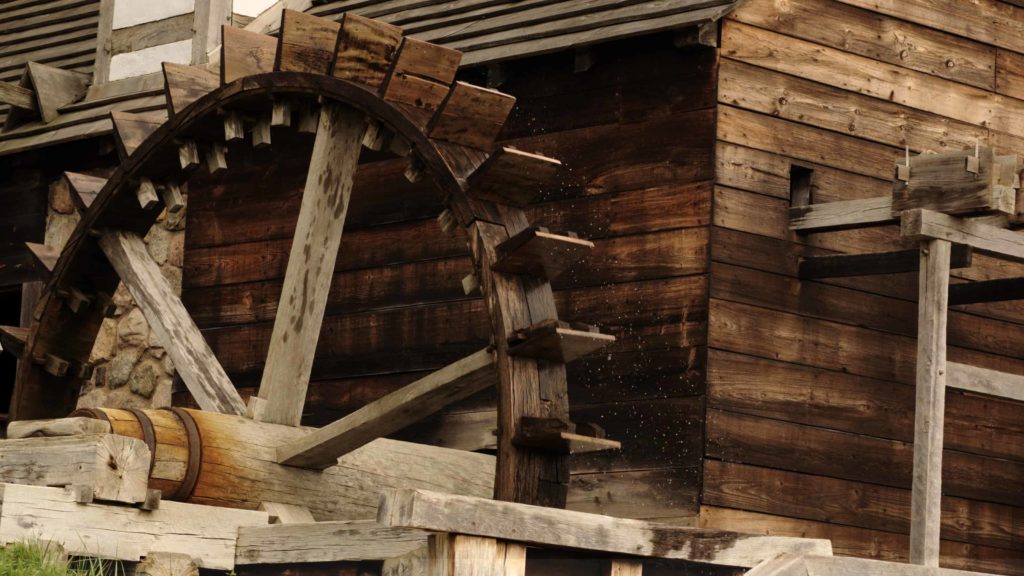
A waterwheel turns at the Saugus Ironworks. Creative Commons courtesy photo
The Jenks family in the Dawn Land
The river Joseph Jenks came to flowed through Wabanahkik, the dawn land, in the language of the Wabenaki. They were and are a confederacy of native people living here on the east coast and inland, and they include the Pawtucket or Pennacook who lived along the river where Joseph would build his stone canals.
Many people lived in what is now New England when he first reached it. The Wampanoag, people of first light, and the Haudenosaunee (Iroqois), people of the long house, and many more were farming the river valleys, hunting in the hills, fishing in the bays and traveling and trading along the rivers.
Joseph Jenks would have known them. And whether he knew it or not, he was changing their world.
From his point of view, he was setting up the Saugus Ironworks, the first successful ironworks in the land. He laid out a plan for the works and a Tudor house for the ironmaster, Browne says, and he led the building of the “stone stack, bellows, dam and network of canals for transportation of the ore.”
The forge ran in summer and fall, when the river ran, and in winter those Scots indentured servants cut wood for charcoal.
The Iron Works covered more than 600 acres, and a genealogy for Scots sent to the Colonies tells me “the men worked long hours, 12-hour shifts. The work was hard, dirty, hot and dangerous. More than likely, many ended up deaf or at least hard of hearing because of the constant hammering.”
And the ironworks produced. The workers were exempt from the military, taxation and even church. By 1648, the furnace was producing seven or eight tons of iron a week for “chains, plough irons scythes, bolts,” Browne says.
Joseph Jenks was making them, and more than that, inventing them. He made the first cast iron in what would become a new country, Browne says — a three-pound iron pot that would hold a quart of water. (As Browne was writing, it still existed in the reading room at the Lynn public library.)
Joseph also introduced the idea of “protection for the manufacture of improvements” — and applied for, and got, the first patent, for the making of an engine for mills to go by water. He patented the first water wheel and apparently invented the first fire engine in America.
His ingenuity is striking. But I know, and I say it with sadness, that the ironworks he built had grave costs, especially to the Native People who lived there. Their people had already suffered from illnesses brought by European fishermen, and the illnesses spread as Europeans spread and took land.
The Pawtucket traded for iron tools, according to the Saugus Ironworks, and found them useful. But their people were dying as the stone tower went up and the trees came down, as cutting for charcoal leveled the forests.
Joseph lived a long life here, making tools for the farmers and townships around him. He remarried in New England, and he and his second wife, Elizabeth, had at least five more children, and he died in March 1683, at 81.
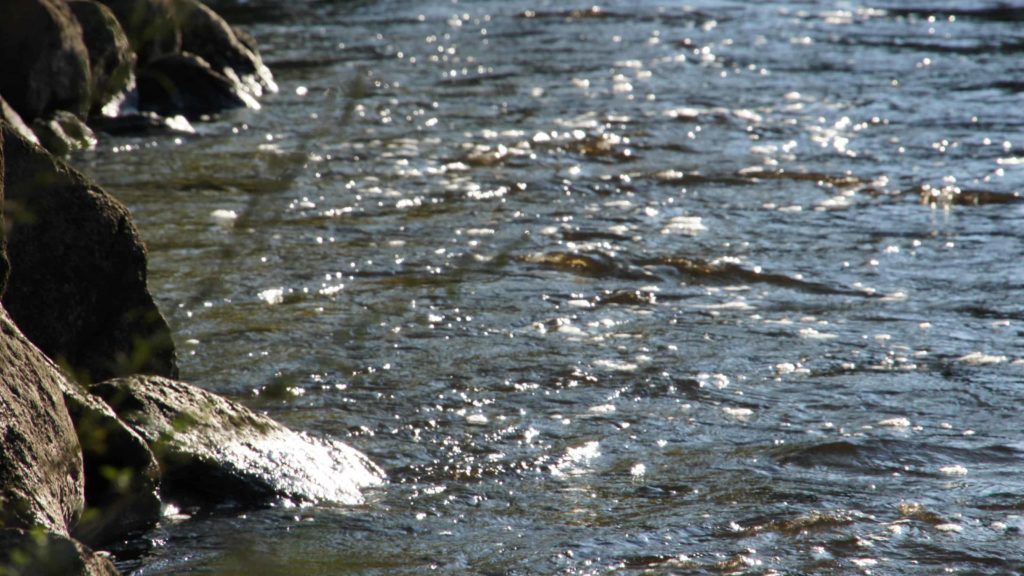
The river runs swiftly near what is now the Saugus Ironworks. Creative Commons courtesy photo.
Second generation: The Jenks family in Rhode Island
My family goes back to Joseph’s son, Joseph, who was born in 1632 at Colnbrook or Hounslow in England. He would have been about 11 when his father decided to sail west. Young Joseph’s mother had died, and his father left him in England while he started his new venture. The boy would have crossed the ocean a year or two later, when he was 15.
Over time, he found his feet here. He must have grown to manhood in his father’s forge, in its trade and speed, and he seems to have followed in a similar line. He apparently worked at the ironworks, and then in Concord, a few miles away, at an iron smelter.
In his 20s he was apparently accused of making treasonous remarks about Charles II in a tavern — he had said, probably after a few pints, that if he had the king here, he would cut off his head and make a football of it. He seems to have been briefly imprisoned before the charges were dropped. He would have had two children younger than four years old then. It sounds hard on his wife.
He had married Esther Ballard, and they had six children when, on March 25, 1669, he was granted land along the river in Pawtucket, Rhode Island, for a sawmill. The family moved then, with a year-old baby and five young children. And they founded the new town.
When Joseph came to the new river, he found pine, chestnut and oak growing along the banks.
As UMASS professor Lisa Brooks describes it: Paths led “through forests which (native communities) had long managed with fire. As Roger Williams noted, Native men performed controlled burns of the ‘underwoods’ in the fall, which, combined with selective cutting for firewood, fostered an abundant open forest, which encouraged the growth of tall nut trees. The spacious canopy allowed sunlight to filter through the leaves, encouraging growth of berries and other edible plants. The nuts, grasses, berries, and saplings that flourished in this forest were inviting to game …”
What young Joseph named the town of Pawtucket was one of many long inlets and fingers of land in Narragansett Bay, near what is now Providence, and people were cultivating the land as they had for generations.
“Here, extended families of women planted intercropped mounds on peninsulas,” Brooks says, “fertile bowls, naturally bounded by water …
“The waterways surrounding these peninsulas provided vital shellfish harvesting and fishing, especially as the alewife and herring runs came through in the spring. “Wampanoag families inhabited all of these places, with usage rights determined through ancestral bonds and council negotiation; stories, ceremony and longstanding adapted practice enacted fair distribution and sustainability of resources.”
Jenks was cutting trees and pasturing cattle here, and powering a forge on the river.
Roger Williams owned land here, land he had bought from the Narragansett people thirty years before, but “it was not until Jenks built his forge and sawmill at the falls that this sparsely populated area become a village and eventually a center for metalworks and other trades,” writes Susan Marie Boucher in a history of the town.
His sawmill seems to have prospered. He bought 60 more acres of land three years later, Browne tells me, on the Blackstone River at Pawtucket Falls. He built a house and forge on the south side of today’s Main Street — a plaque marks where it stood — and he received 100 more acres over the next 15 years.
But in the 1670s, tensions were growing between the native people and the incoming Europeans, as the Colonists took land and resources. An alliance under the Wampanoag leader Metacomet made a concerted attempt to drive the European colonists out of New England. Native forces swept through at least 10 major population centers, a great number then.
It is a complex conflict and a bloody one, and Joseph was an influential landowner.
In 1675, a colonial force attacked native towns across Rhode Island. In 1676, in coordinated native attacks on European towns, Joseph’s house and forge burned to the ground. But he and his family survived.
He came back, and he rebuilt. He became an official in the colonial governments. For 13 years between 1680 and 1698 he was elected assistant (colonial representative) to the General Assembly.
He kept his land in planting, meadows and wild pasture. He kept oxen and steers, milking cows, two mares and a colt, pigs and sheep.
Jenks’ business led to “industrial development on both sides of the river, including sawmills, grist mills, oil mills, potash manufacture, and shipyards,” says the National Park Service.
He lived to be 95. His son William was eighth of nine children, and when Joseph died in 1717, he left William a quarter share in his lands on the seven mile line and half of his “Cole house and fforge.”
(His wide web of descendants, according to at least one source, also include Amelia Earhart and James Thurber.)
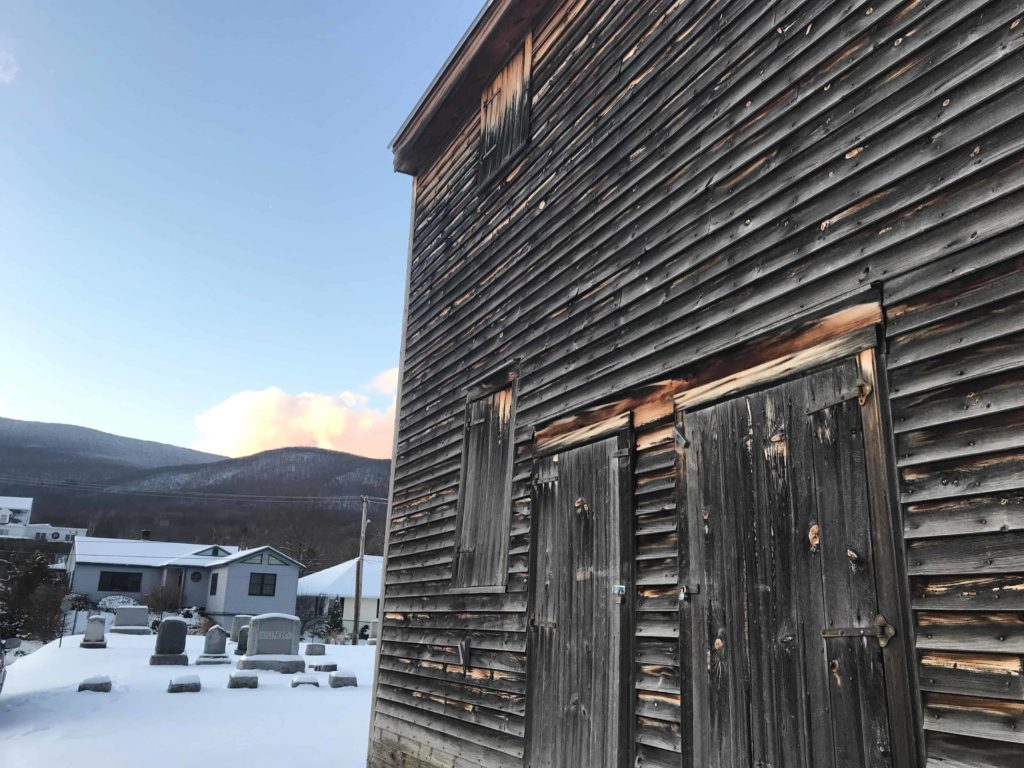
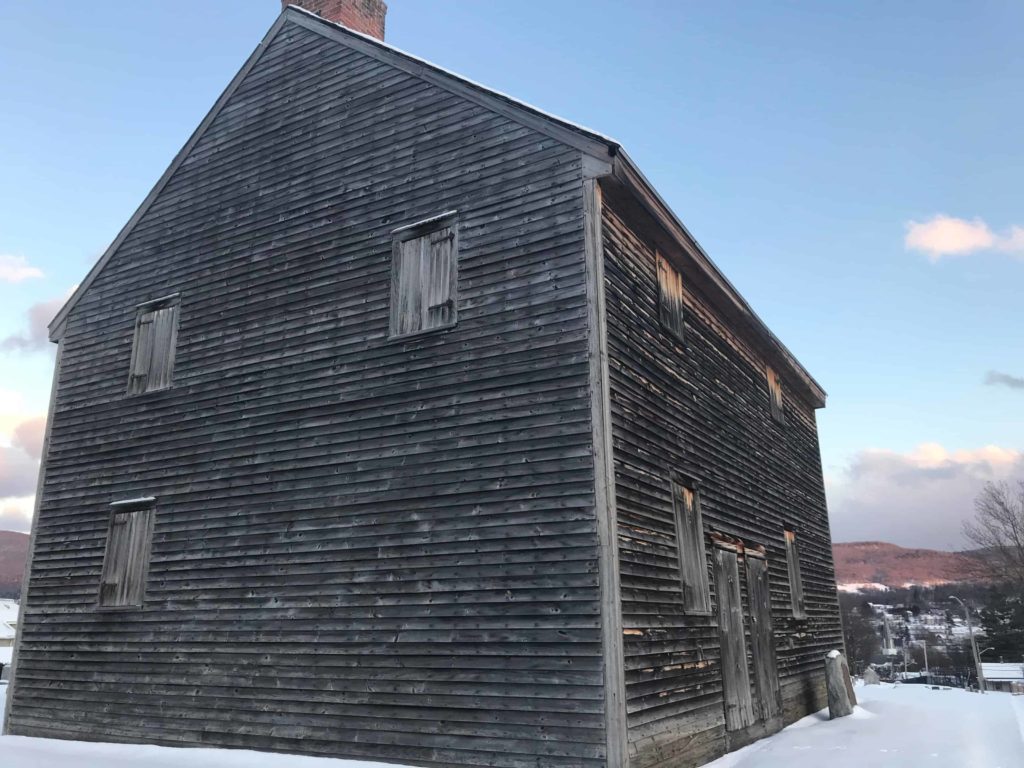
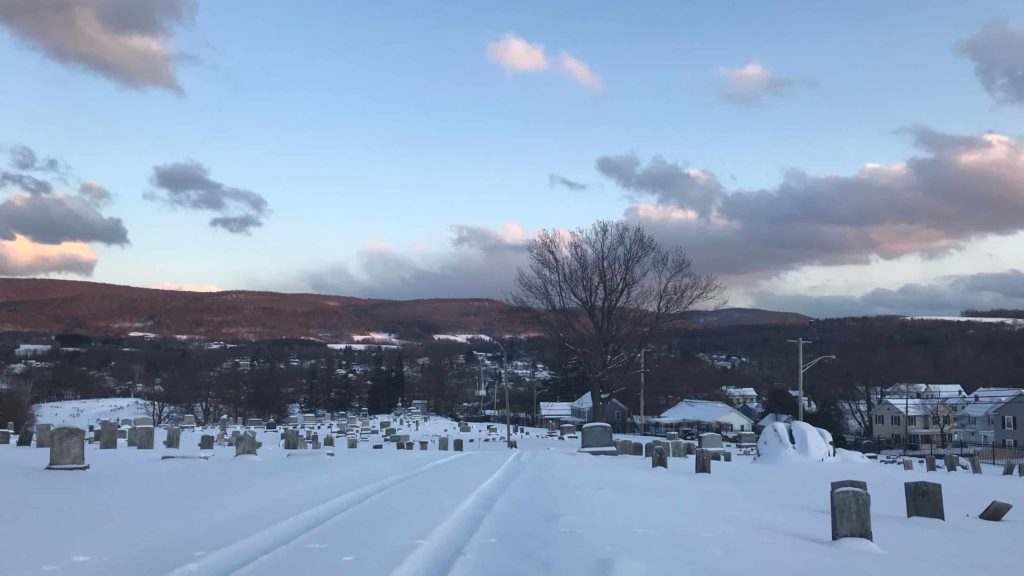
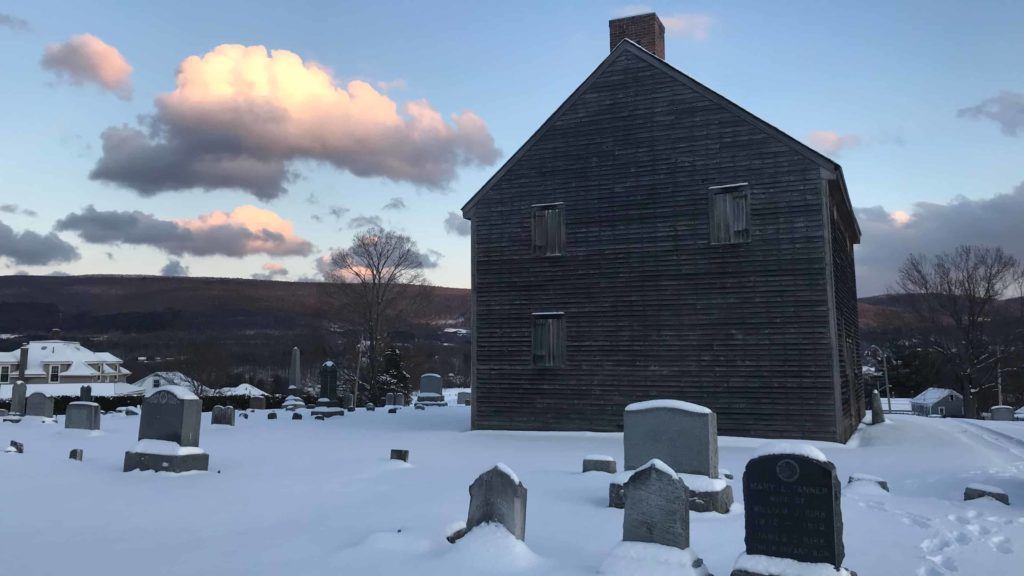

From Narragansett Bay to Cheshire Harbor
We haven’t seen the Berkshires yet, but they are beginning to show on the horizon.
In this generation, Williams Jenks — Judge William Jenks, it turns out — lived where his father had lived, near Pawtucket Falls. He was born in 1674 and would have been two years old when the family home burned. He lived served as Chief Justice of Providence County Court. He seems to have had a blacksmith’s shop in his house, to have contributed to building a stone bridge over the Pawtucket, and to have served on a committee to determine the boundaries between Rhode Island and Massachusetts.
He married Patience Sprague, and after she died he later married her widowed sister Mary. Between them he had 10 children.
His son John, born in 1710, would grow up to become Doctor John Jenks, in Dartmouth, Mass. John married Rachel Lawrence July 5, 1731, and his third son, Jesse Jenks, was born about 1734. The family returned to Smithfield, Rhode Island, near Providence.
Smithfield had an active Quaker community then. They sound an independent people, as the Adams Historical Society describes them, spare in their possessions and strong in their ideals. They became active in the abolition movement.
“Quaker precepts were based on the belief that each person is guided by their own inner light,” the Adams Historical Society tells me. “They do not need a church or clergy to bring them closer to God. … As a result of their unconventional beliefs they were persecuted and even hung on Boston Common in the 1660s.”
Their Sabbath day services kept an ‘appointed hour of silence,’ the historical society says, a time when they gathered together and sat listening to whatever might come. A Friend explains:
“We come together from many corners of life — let us sit down in reverent silence. Let us each put down our burdens and help one another to rest. Let us become listening souls, for it will not be in earthquake, or fire but in a still small voice, that He will make His presence known. It will be in unhurried stillness that we shall be conscious of His voice.”
John died on May 3, 1776, a year after his father. He missed the Declaration of Independence, the proclamation that all men are created equal, and the Revolutionary war.
Fourteen years later, quakers from Smithfield began moving to build a new community in what would become Adams, Massachusetts. And, coincidentally or not, Jesse Jenks and his brother, Edmund, came here too.
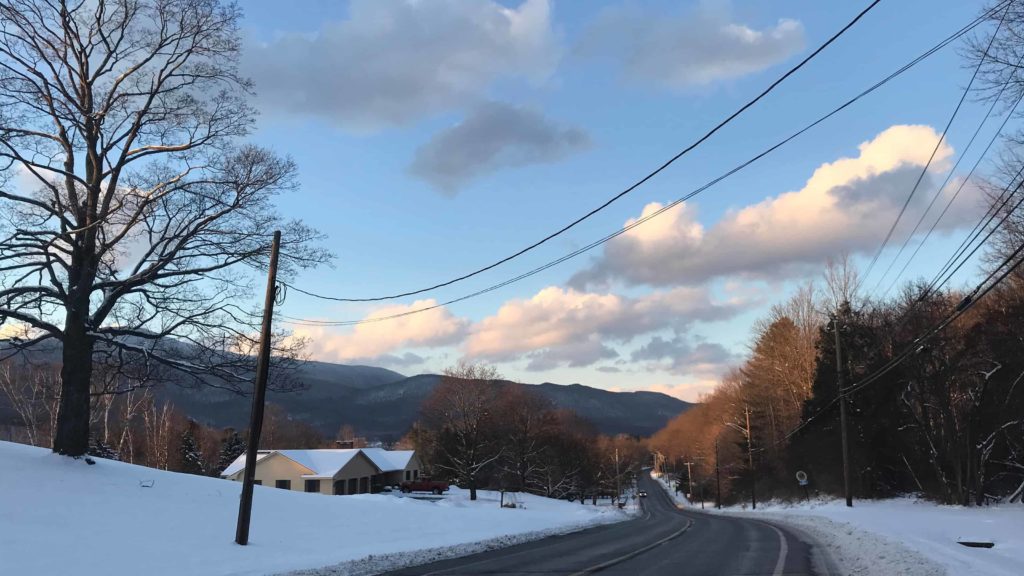
Looking down towards downtown Adams from Orchard Street (Route 116) up on the ridge.
The Jenks Family in the Berkshires
It’s 1790 now. The Revolution is won. The 13 colonies become states. Alexander Hamilton designs a national economic system.
In the Berkshires, the Europeans have almost entirely forced away the native people. In the Northern Berkshires, the have had to leave their lands along the trade routes between the Connecticut and the Hudson valleys.
In the southern Berkshires, The Mohican people who have lived between these ridges and the wide tidal river now called the Hudson have petitioned the new state for their own township within the new legal system. But within 30 years colonists have found means to force them off of their land, and in 1780 they formally left the community for New York State.
At the same time, Elizabeth Freeman was proving in Massachusetts Supreme Court that slavery is illegal under the new state constitution, and therefore she is a free woman — even though, as a woman and a black person, she could not legally bring her case to court.
And along the Hoosic River, Quakers from Smithfield have lived in a farming community for 15 years before they began building a simple wooden Meeting House with a long view over the valley.
Jesse and his brother, Edmund, will bring the Jenks family west. Edmund Jenks came here from Smithfield in 1768, as the first quaker came. I have not found confirmation that he or Jesse were Quakers themselves — and, as my mother’s father would say, “correlation is not causation” — but they came from a community influenced by Quakers from Roger Williams onward.
Jesse married Mary Smith in Smithfield, and Stephen is his eldest son, born c. 1759. (Later, Jesse remarried Abigail Sayles, on June 28, 1787).
In 1790, Jesse and his family arrived to by the farm next door to his brother. He was 56 then, and he is supposed to have ridden up the hill with a saddle bag full of coins hidden in his horse’s oats. They lived on neighboring plots of land on Orchard Street, on the Cheshire-Adams line.
When I went looking for them, I learned that Orchard Street is Route 116. I may have seen Edmund’s house, wooden clapboard and overgrown, as I was driving by. I paused in the turnoff for the St. Stanislaus cemetery to look at a long, low, white house and barn, up on the ridge before the road heads down into the valley, and I realized by the number on the mailbox that it belonged to the Jenks’ neighbors. Eleazar Brown and his family also came here from Smithfield, and the Jenks brothers must surely have known them. Maybe they dropped by when the Brownes had large family reunions next door.
And it I wasn’t standing right at Jesse Jenks’ front door, then on that afternoon I was near it. He would have lived and farmed and spent the last years of his life an acre or two from where I was standing. And the hills might have looked somewhat the same then. They would not have been logged yet and spent a hundred years growing a younger forest back. Chestnut trees might have grown here, 10 feet thick and more. And Jesse could have fished in the river.
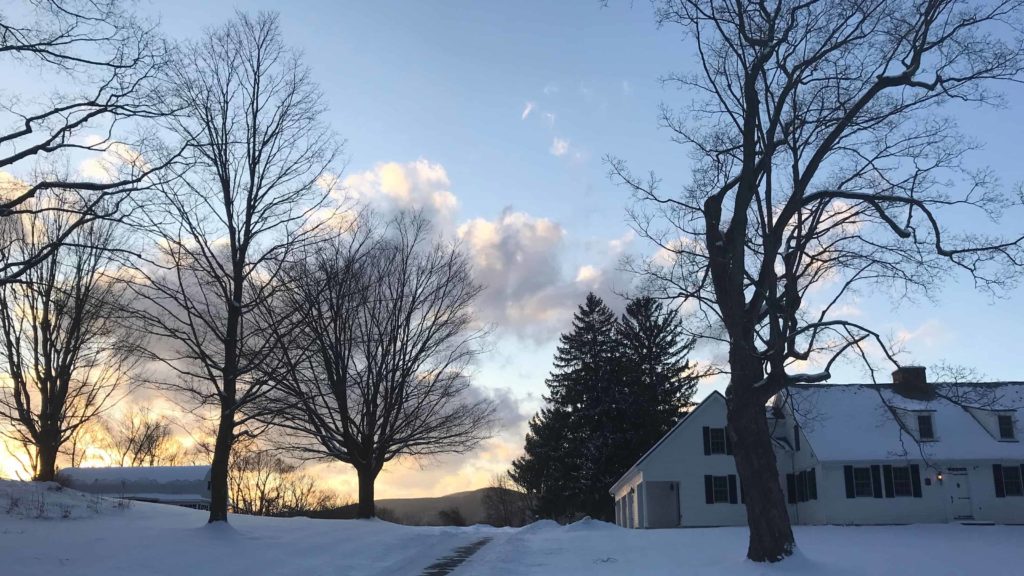
The Eleazer Browne House, according to the Adams Historical Society, goes back to 1778.
Jenkses move west — to Laurel and Laura
From here, the Jenks family I am kin to follows a familiar pattern. They move west, looking for land to farm, and they keep close to family when they can.
Jesse stayed in Adams, and his son, Stephen, raised his family here. Stephen married Anne Sayles, daughter of Gideon and Sarah Sayles, in Cheshire, on August 5, 1784, and They had 11 children. Their eldest son, Stephen, was born in Adams. And their youngest two daughters are Deborah and Sarah — like my mother and her sister.
As the children grew, Stephen and his family moved to Scipio, New York, where he established a farm, but before they moved, he traveled the midwest, looking for a place to bring them. Because of that trip, his first and third sons, Stephen and Samuel, bought land in Laurel, Indiana, in 1814.
Young Stephen had newly married that year, and he and his wife, Susannah Overfield, must have packed up for Laurel almost at once. The set up to farm in Indiana, but later they moved to Wabash County, to be near three of his brothers.
My father’s father’s family was farming in Indiana at about the same time, and my great grandfather went to Wabash … I wonder whether they ran into each other.
Stephen Jenks lived to 1860, so he saw the Civil War cresting to break, though he did not know that his youngest son, Edwin, would serve on Sherman’s March to the sea.
His youngest daughter was Deborah A., and the brother just above her, Samuel, born in 1829, moved with his parents to Wabash. They lived near Wooster, where on November 14, 1858, Samuel married a woman who rejoiced in the name of Delois America Gallagher. They later moved to Fairfield, Jefferson County, Iowa.
And on May 21, 1864, a few months before Samuel’s brother Edwin marched to the sea, Delois gave birth to Laura Effie Jenks. Laura was their second child. Her older brother, Edwin, would have been not quite two and almost walking.
Laura later married an equally euphonious man by the name of Dr. Robert Bruce Stephenson. They had two sons, Edwin and Lawrence, and Edwin fought in World War I. And this is as far as Browne could take me, because he was writing a Jenks family history, and because when he wrote it, Edwin Jenks Stephenson, home from the Russian front, was married, working as an engineer and living in Davenport, Iowa, where my mother and my aunt used to take the train to see their grandparents in the summers and play baseball with the neighbor children on streets shaded with elm trees, on long summer evenings.

The river runs swiftly near what is now the Saugus Ironworks. Creative Commons courtesy photo.


Thank you for this beautifully written historic sketch of the Jenks’ Welsh history. I am fascinated, since I am a granddaughter of Randolph Jenks, from Morristown, NJ and later Tucson, AZ. And the story goes on.
Im Randolph Jenks great niece! I love his book its just fascinating.
I enjoyed your history. I am descended from three men who would have worked for and with the first Jenks at Saugus. I think one of them had a disagreement with him about the building of the furnace. He was William White, a specialist in building crucibles for melting metals and for alchemists. I take it from the descriptions of his life and works that he would have been called a civil engineer today, and maybe a chemical engineer. Another was George Darling, a Scots prisoner who probably managed the oxen there. He is listed in the court records as keeping the cattle at Saugus. And I am also descended from John Vinton, one of the “finers” at Saugus, apparently a specialist at refining the metal produced at Saugus. I love reading the history of those days. These men were the first industrialists in America.
Very nice article. I wrote the Wikipedia articles about Joseph Jenckes Jr. and Sr. that you link to. The wife of Joseph Sr. is probably Joan Hearne, per the newer source, which I have access to here in Providence, Ri at the historical society library. The scanned book may be checked out for free here: https://archive.org/details/jenksfamilyofeng00brow/page/n89/mode/2up
Thank you. I am a descendant of Jenks family. Oren Jenks (1844-1896) was my great grandfather. He was a Civil War veteran. My grandmother was Sara WIllard Jenks. I have inherited a half stock percussion rifle that has been in my family for many, many years. The initial A.A. J. are on the top of barrel behind the gunsight. Does anyone know about an A.A. Jenks from the early-mid 1800’s? I would love to know who he was.
THanks!
I have a Adon A Jenks 1828-1903 in my tree. He would be my 3rd Great Grandfather. He was born in New York but somehow along the way he became a shoemaker in Ovid, Michigan where he passed away.
I enjoyed reading this essay about the Jenckes/ Jenks family. I am a descendant of Joseph Jenckes and more directly of Job Jenckes
and he and his descendants are buried in the OAK HILL Cemetery in Woonsocket, RI. The cemetery anticipated the Civil War and
combined an older Jenckes cemetery and land acquired by Edward Harris. They were al dedicated Abolitionists.
My father, grandfather and great grandfather going back to Job Jenckes are buried there.
I live in Pawtucket where Joseph Jenks began his first Foundry.
Fascinating article. My grandmother Edith Lucy Jenks Gaines was the daughter of Alvin Fales Jenks and she married
Captain Ambrose Gaines from Virginia and Tennessee!
Thanks much for writing this article; it was an interesting addition to the Jenks genealogy. I am descended from Joseph Sr., Joseph Jr., William T. (Judge), John (Dr.) Jesse Jenks, Stephen Jenks and then his 3rd son Samuel Jinks (1792-1881). You wrote the story with a personal bent which I appreciated. Fun to read!
Thank you for this wonderful article. I am the wife of a Jencks and have done lots of research into my husband’s family. It was nice to see history from a different line of the family tree.
Hello,
Thank you for posting this. Joseph Jenks was my 9th great-grandfather. A couple years ago my father, who is now 93, was eager to find documentation about the patent Joseph Jenks received for his invention at Saginaw. To help him I started investigating the genealogy. It’s been an amazing journey thus far, to include my learning that where I bought property in Upstate New York was home to a number of Jenks. I found that remarkable as my life’s journey has taken me across the globe, only for me to end up here.
Best to all of you
Terri Merz
I too have the same lineage to Cheshire, and Jesse Jenks is my 6th Great Grandfather. My line continues through Jesse Jr., Mowry, Albert, Charles, Nathan, Howard, and my mother Eileen.
We are still in the Berkshires and loving it.
I have the 1952 William Bradford Brown book, The Jenks Family in America, and the Meredith Colket Jr. book, The Jenks Family of England, of our England/Wales connection. This was also part of Harlan Walker Jenks’ will. Colket took many trips to England to research the families and was finally published in 1956.
Very good read. Thank you.
thank you my mom is norine mae jenks her dad is barton jenks from eartington pa
Thank you for the article